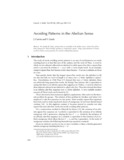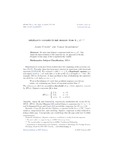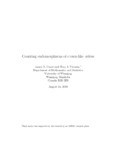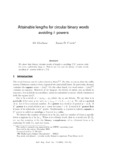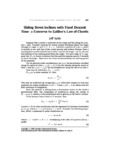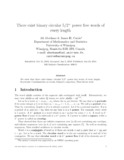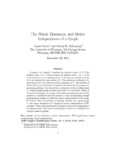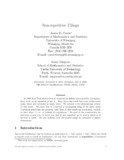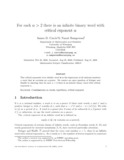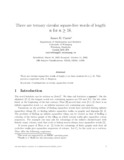Search
Now showing items 1-10 of 20
Avoiding Patterns in the Abelian Sense
(Canadian Mathematical Society, 2001-08)
We classify all 3 letter patterns that are avoidable in the abelian sense. A short list of four letter patterns for which abelian avoidance is undecided is given. Using a generalization of Zimin words we deduce some ...
Dejean's conjecture holds for n ≥ 27
(EDP Sciences, 2009)
We show that Dejean’s conjecture holds for n ≥ 27. This brings the final resolution of the conjecture by the approach of Moulin Ollagnier within range of the computationally feasible.
Counting endomorphisms of crown-like orders
(Springer, 2002-12)
The authors introduce the notion of crown-like orders and introduce powerful tools for counting the endomorphisms of orders of this type.
Attainable lengths for circular binary words avoiding k-powers
(The Belgian Mathematical Society, 2005)
We show that binary circular words of length n avoiding 7/3+ powers exist
for every sufficiently large n. This is not the case for binary circular words
avoiding k+ powers with k < 7/3
Sliding Down Inclines with Fixed Descent Time: a Converse to Galileo's Law of Chords
(Canadian Mathematical Society, 2008-12)
There Exist Binary Circular 5/2+ Power Free Words of Every Length
(The Electronic Journal of Combinatorics, 2004-01-23)
We show that there exist binary circular 5/2+ power free words of every length.
The metric dimension and metric independence of a graph
(The Charles Babbage Research Centre, 2001)
A vertex x of a graph G resolves two vertices u and v of G if the
distance from x to u does not equal the distance from x to v. A set
S of vertices of G is a resolving set for G if every two distinct vertices
of G are ...
Non-Repetitive Tilings
(The Electronic Journal of Combinatorics, 2002-07-03)
In 1906 Axel Thue showed how to construct an infinite non-repetitive (or square-free) word on an alphabet of size 3. Since then this result has been rediscovered many times and extended in many ways. We present a two-dimensional ...
For each a > 2 there is an Infinite Binary Word with Critical Exponent a
(The Electronic Journal of Combinatorics, 2008-08-31)
The critical exponent of an infinite word w is the supremum of all rational numbers α such that w contains an α-power. We resolve an open question of Krieger and Shallit by showing that for each α>2 there is an infinite ...
There are Ternary Circular Square-Free Words of Length n for n ≥ 18
(The Electronic Journal of Combinatorics, 2002-10-11)
There are circular square-free words of length n on three symbols for n≥18. This proves a conjecture of R. J. Simpson.

